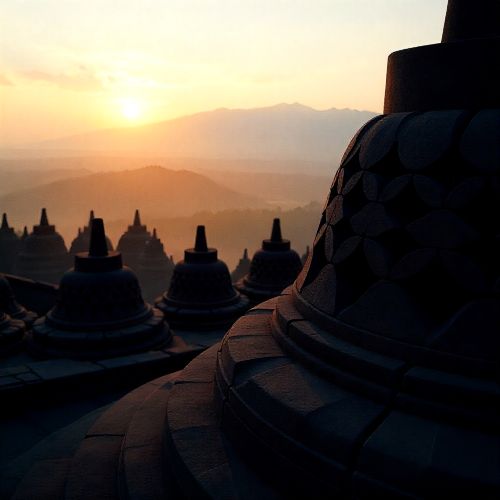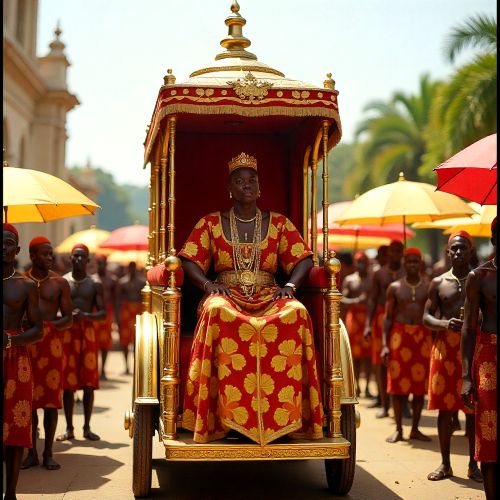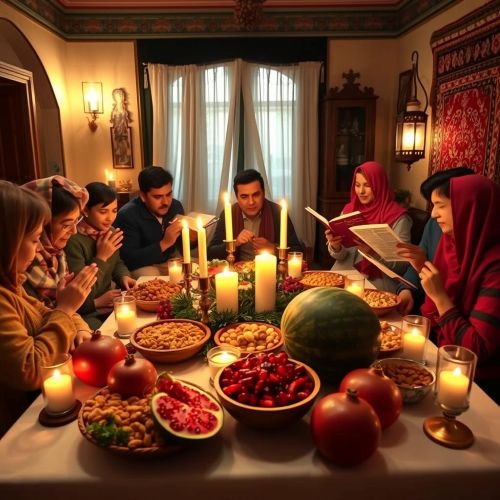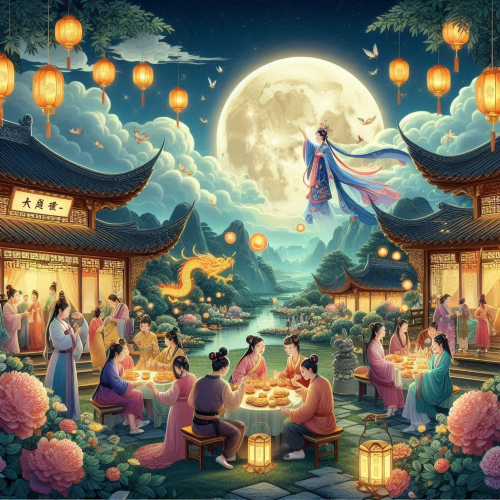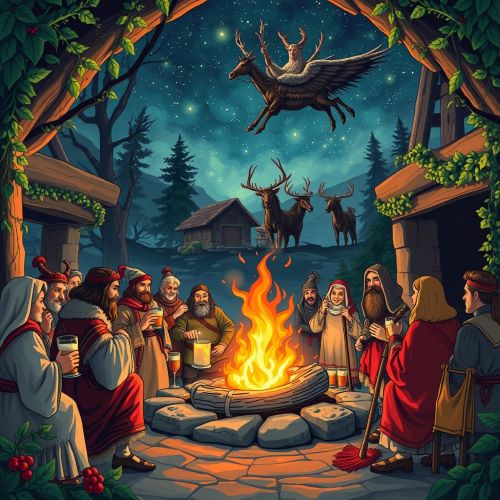Perun’s Day : Celebrating the Slavic God of Thunder
At a glance
| Description | |
|---|---|
| Location | Eastern Europe |
| Country | Russia, Ukraine, Belarus, Poland |
| Dedicated To | Perun |
| Duration | 1 day |
| Time of Year | July |
Introduction
Perun’s Day, traditionally observed on July 20 or 21, is one of the most meaningful celebrations linked to ancient Slavic mythology. Dedicated to Perun—the formidable god of thunder, lightning, storms, war, and justice—the festival reflects the spiritual worldview of early Slavic communities whose lives were deeply intertwined with natural forces. Known historically as Perunica, the day marked an annual tribute to the celestial protector who watched over warriors, upheld law, and brought life-sustaining rain to agricultural societies. Although Christianization transformed much of the early Slavic religious landscape, interest in Perun’s Day has been revived by modern followers of Rodnovery (Slavic neopaganism), who treat the occasion as a vital link to ancestral tradition and cultural identity. This resurgence has turned Perun’s Day into both a historical remembrance and a contemporary celebration of Slavic heritage.
Connection with Mythology
At the heart of Perun’s Day lies the mythology surrounding Perun, the highest deity in many Slavic pantheons. His name comes from the Proto-Indo-European root per- meaning “to strike,” capturing his association with thunderous power. Myths describe him as a mighty warrior armed with a hammer, axe, or bow that releases blazing thunderbolts. Perun’s home is envisioned as the top of the World Tree, from where he surveys the skies, commands storms, and safeguards the moral order.
One of the most defining narratives connected to Perun is his cosmic rivalry with Veles, the god of the underworld, cattle, magic, and chaos. Their conflict represents the eternal tension between order and disruption, sky and earth, law and trickery. When Perun hurls lightning at Veles—often imagined as a serpent or dragon—it symbolizes the cleansing force of storms and the arrival of rain that renews the land. The first thunder of the year was believed to signal Perun’s awakening, marking the start of a fertile season.
Perun’s imagery is rich and consistent across Slavic regions. Ancient idols often depicted him with a stern face, red beard, silver hair, and golden moustache, conveying both fiery force and divine authority. His sacred symbols include the oak tree, the eagle, the eternal flame, and the six-spoked thunder wheel. Stone axes found in the earth were once treated as “Perun’s stones,” believed to offer protection from lightning, misfortune, and illness. These symbols continue to shape how Perun is honored today, making mythology central to the celebration of Perun’s Day.
Main Activities
Perun’s Day traditionally featured a combination of ritual worship, communal gathering, and symbolic acts designed to honour the thunder god’s strength and protective power. In ancient times, communities met at high places—hilltops, sacred groves, or near ancient oak trees—to perform ceremonies. Priests kindled ritual fires and maintained eternal flames that represented Perun’s presence. Offerings such as bread, livestock, mead, or roasted meat were made to ensure good harvests and protection from storms. Warriors swore oaths at Perun’s idols, seeking his blessing for courage and truthfulness.
While animal sacrifices no longer form part of modern practice, contemporary Rodnovers maintain the spirit of these rituals with activities that reinforce unity and connection to nature. Ceremonial fires remain central, with bonfires lit at dusk to symbolize lightning and renewal. Groups gather to sing traditional songs, recite prayers, and invoke Perun through rhythmic drumming and chanting. Modern practitioners often take part in reenacted duels, wrestling, or strength competitions reflecting Perun’s warrior identity. Crafting or consecrating axes, hammers, or thunder-wheel amulets is also common, serving as both devotional offerings and personal protection charms.
Many communities incorporate forest walks, riverside gatherings, and communal feasts where traditional Slavic foods and drinks—mead, bread, roasted meats, and seasonal fruits—are shared. These activities blend historical tradition with modern cultural revival, giving Perun’s Day a renewed significance grounded in nature, community, and ancestral memory.
Importance in Cultural History
Perun held the highest position in pre-Christian Slavic religious systems, and his festival was essential to communal life. Before the Christianization of Kyivan Rus’ in 988 CE, Perun was the patron of princes, warriors, and legal order. His shrines were prominent across early Slavic territories, including a notable statue in Kyiv described as having a silver head and golden beard. Oaths sworn in Perun’s name were regarded as binding, and treaties between Kyivan Rus’ and the Byzantine Empire often invoked him as a divine witness. This shows that Perun’s authority extended beyond mythology into governance, law, and diplomacy.
After Christianity spread across Slavic lands, Perun’s image did not disappear. Instead, many of his attributes were transferred to Saint Elijah (Ilya), whose feast also falls on July 20 (July 2 O.S.). Elijah’s fiery chariot and storm-bringing power made him an effective Christian counterpart to the thunder god. Folk customs, proverbs, and seasonal celebrations blended the two traditions, allowing elements of Perun’s worship to survive well into the modern era, especially in Eastern Europe.
Today, Perun’s Day has become a cultural symbol of Slavic continuity and resilience. For neopagans, it represents a revival of traditional spirituality. For many others—including those who are not religious—it serves as a celebration of Slavic folklore, historical identity, and the enduring legacy of pre-Christian belief.
International Appeal
Although Perun’s Day originates in the lands of the early Slavs, its appeal has broadened significantly in recent years. Slavic diaspora communities in North America, Western Europe, and Australia hold annual gatherings that blend traditional rituals with local cultural elements. The global neopagan movement has also embraced Perun’s Day, adding it to the growing list of revived Indo-European festivals honouring nature, seasonal cycles, and ancestral heritage.
Digital culture plays a major role in this expansion. Online groups share ceremonial guides, historical research, and artistic depictions of Perun, making the mythology accessible to audiences worldwide. The rise of Slavic fantasy literature, video games, art, and folklore-themed media has further increased interest. For many people, Perun’s Day offers a window into an ancient mythological world that speaks to universal themes: the power of nature, the struggle between order and chaos, and humanity’s enduring need for protection and justice.
Source
Rybakov, B. A. (1981). Ancient Slavic Paganism. Moscow: Nauka.
Wikipedia contributors. (2025). Festival of Perun. Wikipedia. https://en.wikipedia.org/wiki/Festival_of_Perun
The Archaeologist. (2025, July 25). The Worship of Perun: The Slavic God of Thunder. https://www.thearchaeologist.org/blog/the-worship-of-perun-the-slavic-god-of-thunder
Slavic Mythology Worldwide. (2025, February 18). The Festivals of Perun: Celebrating Thunder and Rain in Slavic Culture. https://slavic.mythologyworldwide.com/the-festivals-of-perun-celebrating-thunder-and-rain-in-slavic-culture/
Bruckner, A. (2025). The Legacy of Perun in Slavic Mythology. Paganheim Publishing.
Kowalski, M. (2023). Mighty Slavic God Perun: Unveiling the Power and Legends. Old World Gods Journal, 45(2), 112-129.
Petrov, I. (2025). Perun: The Thunder God of the Ancient Slavs. Slavic Mythological Review, 12(1), 30-48.
Smith, J. (2024). Festival of Perun: Cultural Traditions and Modern Revival. Journal of Ethnic Festivals, 9(4), 210-225.
Vasilyeva, E. (2022). Perun and the Symbolism of Thunder in Slavic Culture. Eastern European Mythology Quarterly, 17(3), 75-90.
White, R. (1999). Perun, Slavic God of Thunder | History, Symbols & Facts. Study.com.
Frequently Asked Questions
What is Perun’s Day?
Perun’s Day is a traditional Slavic festival held on July 20 or 21 to honor Perun, the god of thunder, storms, war, and justice, celebrated today mainly by Slavic neopagans.
Why is Perun associated with July 20?
The date corresponds to the Christian feast of Saint Elijah, which absorbed earlier Perun traditions, allowing the thunder god’s celebration to survive through syncretism.
How do people celebrate Perun’s Day today?
Modern celebrations include ritual fires, symbolic duels, nature gatherings, traditional songs, crafting amulets, and communal feasting.
What is the myth of Perun and Veles?
It is a central Slavic myth where Perun battles the underworld god Veles, representing the eternal struggle between order and chaos, reflected in thunderstorms.
Is Perun’s Day celebrated outside Eastern Europe?
Yes. Slavic diaspora communities and global neopagan groups observe the festival, contributing to its increasing international recognition.




